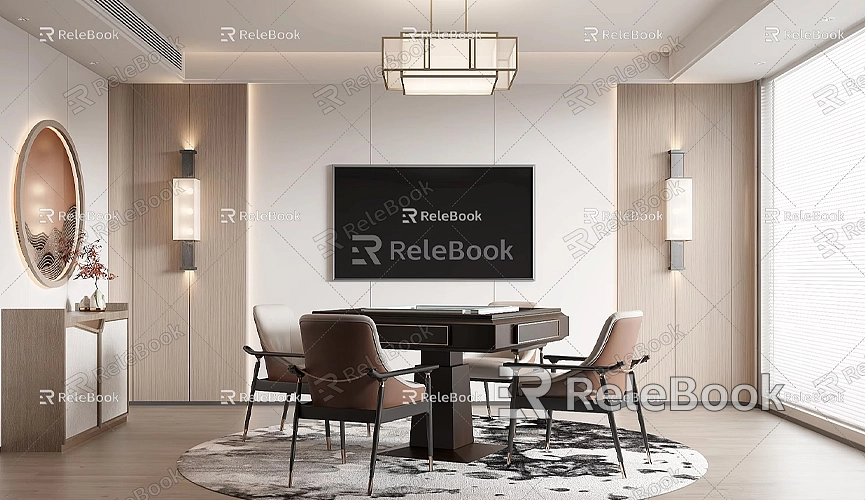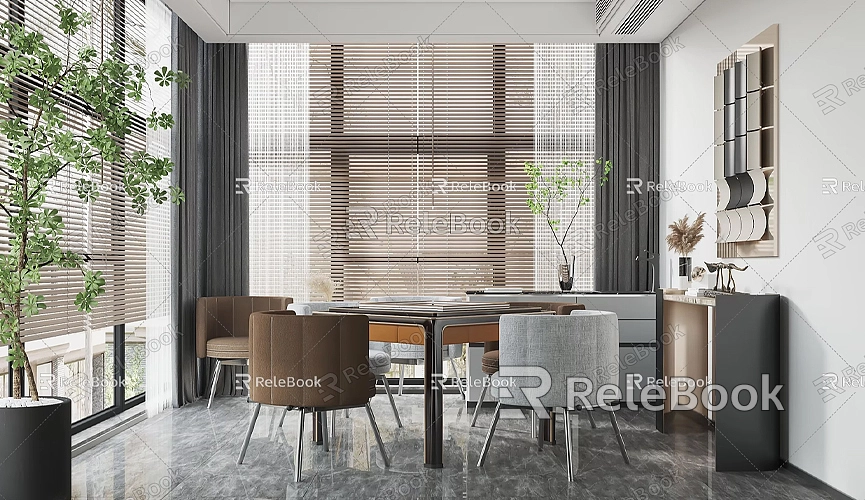How to Make a SketchUp Model Run Faster
When using SketchUp for 3D modeling, especially for large projects or complex models, the software’s performance can slow down significantly. This not only affects modeling efficiency but also greatly increases rendering and export times. This becomes especially problematic when you need to complete a large amount of design work within a short period. However, through a series of simple optimization techniques, users can significantly improve SketchUp’s performance, making the design process smoother.
Common Reasons for Slow Performance in SketchUp
Before exploring ways to speed up SketchUp, it’s important to understand the factors that can lead to performance degradation. While SketchUp is a powerful modeling tool, its performance can slow down when the complexity of a model reaches a certain level, especially when the scene contains large amounts of detail, components, and textures. Some common reasons for slow performance include:

- High complexity of geometry: A large number of faces, lines, and polygons can cause SketchUp to consume a lot of memory, especially when working with complex curved surfaces or circular structures.
- Large file sizes: If your project includes large elements and files, SketchUp requires more computing resources to load and process the data.
- Too many plugins and extensions: While plugins greatly extend SketchUp’s functionality, too many can increase memory usage and slow down the software’s responsiveness.
- Complex materials and textures: High-resolution textures and complex materials consume GPU memory, impacting rendering speed, particularly in large projects.
How to Speed Up SketchUp’s Performance
Improving SketchUp’s performance can be approached from several angles. Below are some common and effective optimization methods:
Optimize Model Complexity
The complexity of a model directly affects the loading and rendering speed in SketchUp. If your project contains a large number of complex geometries or intricate details, the processing speed can drop significantly. To boost SketchUp’s responsiveness, it’s best to minimize unnecessary details and excess geometry. Here are a few ways to simplify your models:
- Reduce face and polygon count: If a model’s details don’t require high precision, consider reducing the number of faces and polygons. For example, use fewer polygons to simulate a circle or complex curved surface. This not only improves performance but also makes the modeling process more efficient.
- Optimize model hierarchy: Complex models often include many nested groups and components. When designing, try to organize the model’s structure logically to avoid excessive group nesting and unnecessary component instances.
Use Components and Groups to Reduce Memory Usage
Components and groups are essential tools in SketchUp that not only help organize the model but also significantly improve performance. Proper use of components and groups reduces memory usage and increases software speed. Components are especially useful for repeated elements, as they allow multiple instances of the same object to share the same geometry data, reducing memory usage and computational load.
- Use components instead of copying: When there are multiple identical elements in a model, it’s better to use components rather than duplicating objects. All component instances share the same geometry data, which greatly reduces file size.
- Use groups wisely: Groups can combine multiple objects together, preventing them from interfering with each other. For elements that don’t need frequent modification, grouping them helps avoid unnecessary geometry calculations and improves the model's manageability.
Reduce Material and Texture Usage

High-quality textures and complex materials can greatly enhance a model’s realism but also increase the strain on the GPU and memory, slowing down SketchUp’s performance. This is especially noticeable during the rendering stage, where high-resolution textures can lead to long load and render times. To reduce the impact of materials and textures on performance, try the following techniques:
- Lower texture resolution: For areas that don’t require high detail, consider using lower-resolution textures. This is particularly effective for less prominent areas. Reducing texture resolution to a reasonable level not only reduces memory usage but also improves software efficiency.
- Optimize material settings: Use simpler materials instead of complex textures, especially for less noticeable areas. Simplifying material settings can help improve performance.
Clean Up the Model and Remove Redundant Elements
As modeling progresses, many unnecessary elements and files may accumulate in the model. These redundant data not only occupy memory but can also increase the file size. Regularly cleaning up the model by removing unnecessary components, groups, and geometry can significantly improve SketchUp’s performance. After completing a project, it’s essential to review and remove any surplus elements.
- Use cleanup tools: SketchUp has third-party plugins (such as CleanUp³) that automatically detect and clean up unused faces, components, and materials. These tools make it easy to remove redundant elements, reducing file size and improving performance.
- Delete hidden geometry: Sometimes we hide certain faces or components in a model. Although these elements are not visible, they still occupy memory and computing resources. Ensure that unnecessary hidden geometry is deleted to free up memory.
Use External Links and File Management
When dealing with large projects, your scene may contain a vast amount of data and complex components. In such cases, you can consider breaking parts of the model into separate files and managing them through "external references." This way, SketchUp will only load the files that are currently needed, instead of loading the entire project all at once, which reduces memory consumption and boosts efficiency.
- Split large scenes: If your project is massive and includes multiple buildings, blocks, or areas, consider splitting these regions into separate SketchUp files and load them as needed.
- Use external references: For common elements like furniture or vegetation, you can store them as external files and reference them in the main project. This avoids loading too much complex data and enhances performance.
Disable Unnecessary Plugins and Extensions
SketchUp has a powerful ecosystem of plugins that extend the software's capabilities. However, having too many plugins can consume system resources, particularly when running large projects. Some plugins may run in the background automatically, affecting overall system performance. Therefore, managing plugins and disabling those you don’t use often is an essential strategy for improving SketchUp’s performance.
- Disable unused plugins: Regularly check and disable plugins that you don’t use frequently. By using the Extension Manager, you can easily disable plugins to reduce memory consumption and improve speed.
- Choose lightweight plugins: Some plugins are very powerful but can be quite complex, consuming significant memory and resources. For commonly used plugins, try to choose lighter versions to avoid overconsumption of system resources.
Upgrade Hardware
If your computer is outdated or has low specifications, upgrading your hardware can be a critical way to improve SketchUp’s performance. Enhanced hardware directly improves SketchUp’s responsiveness and processing power, especially when rendering and working with complex scenes.
- Upgrade the GPU and CPU: SketchUp relies heavily on the CPU and GPU for modeling and rendering tasks. A more powerful processor and graphics card will enhance computation and rendering speeds.
- Increase RAM: Memory is crucial for SketchUp's operation, particularly when handling large projects. Sufficient RAM can prevent software slowdowns and improve overall performance.
Conclusion
Improving SketchUp’s performance requires optimizing the complexity of your models, efficiently using components and groups, simplifying materials and textures, and regularly cleaning up redundant data. Additionally, managing plugins, splitting large project files, and upgrading your hardware are also key factors in boosting efficiency. By applying these methods, you can significantly increase SketchUp’s speed and optimize your design workflow, enhancing productivity.
If you need high-quality 3D textures and HDRIs for your models or virtual scenes, you can download them for free from [Relebook Texture Library](https://textures.relebook.com/). For premium 3D models, visit [Relebook 3D Model Library](https://3dmodels.relebook.com/), which offers a large collection of high-quality 3D resources.

